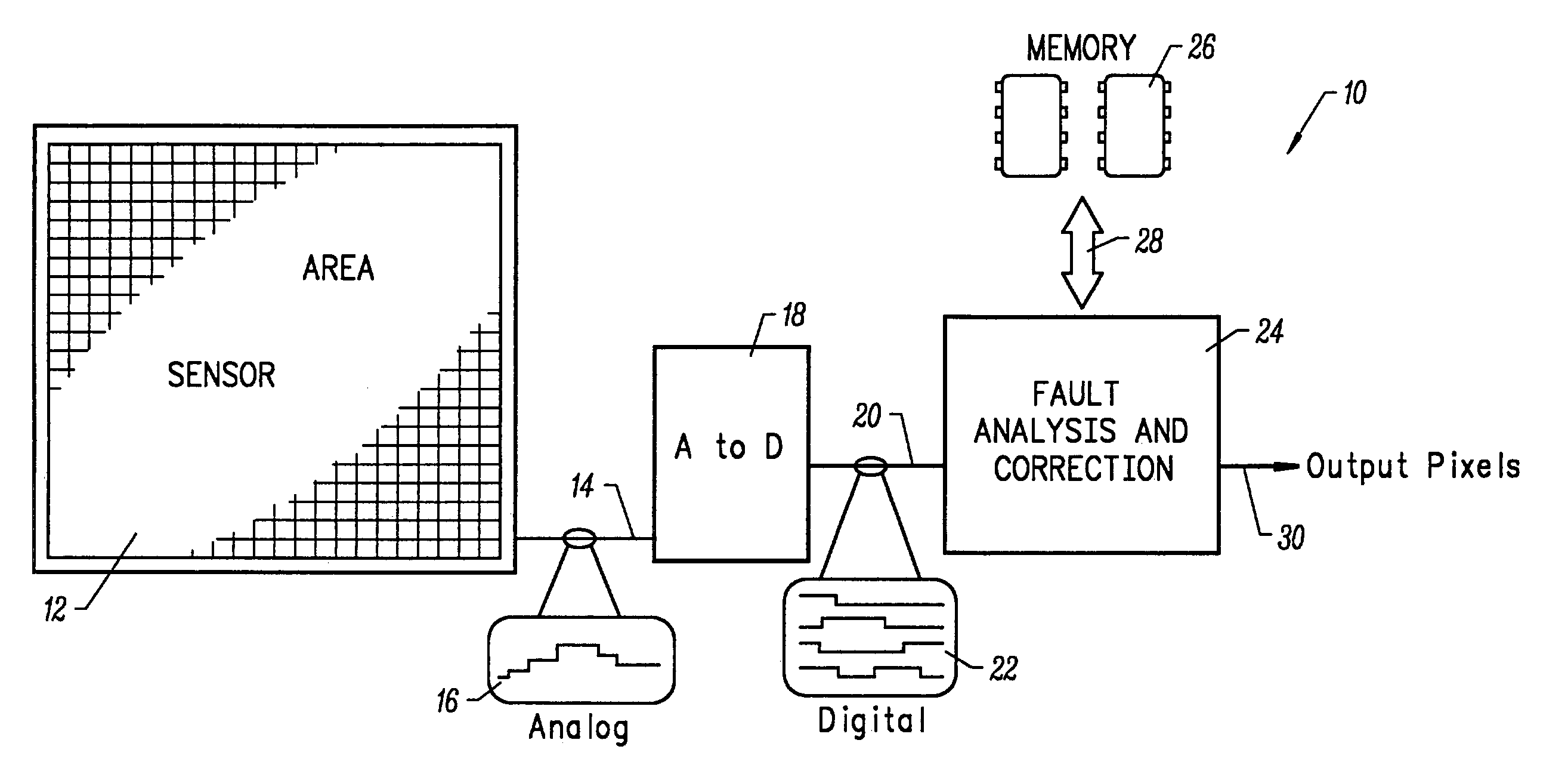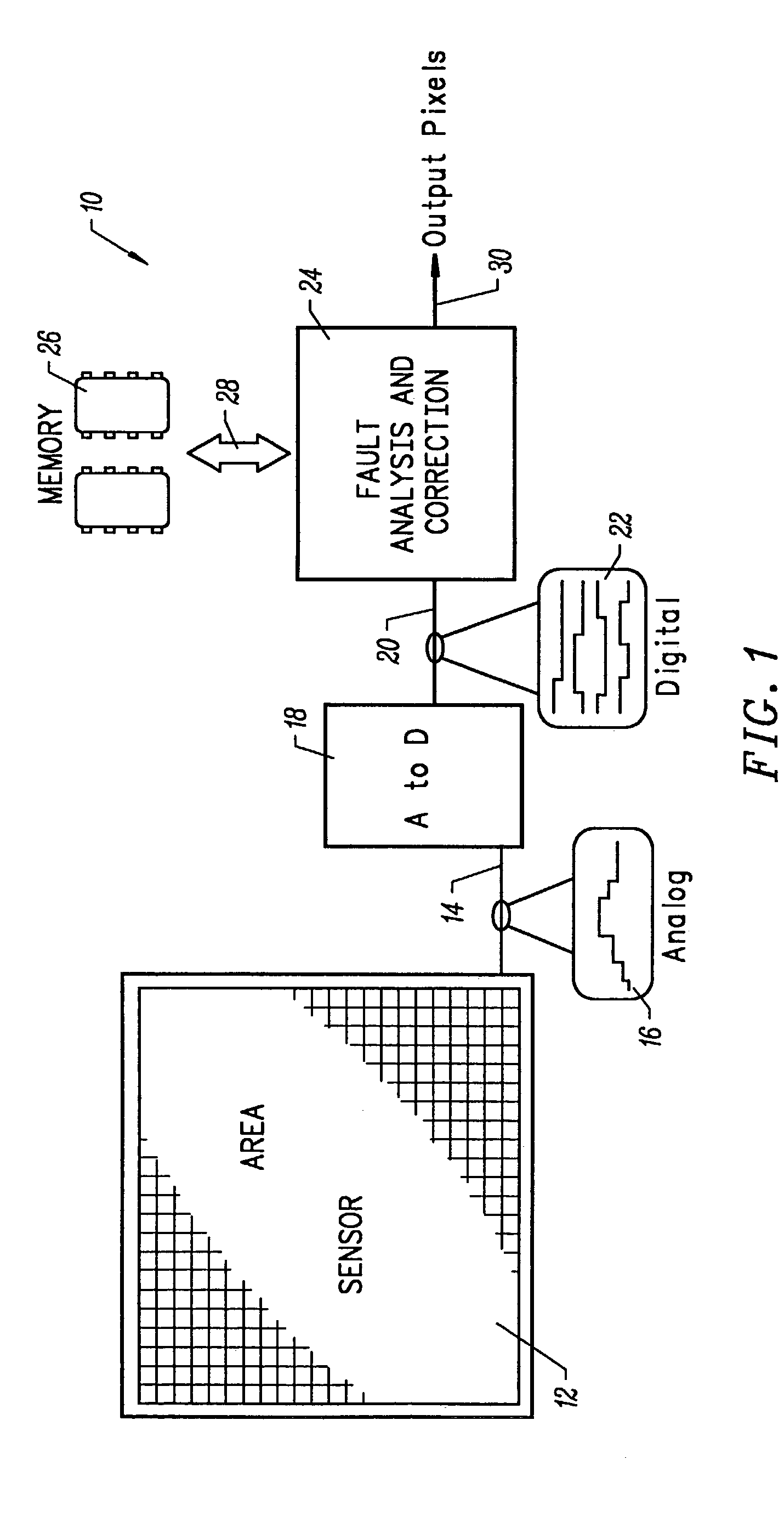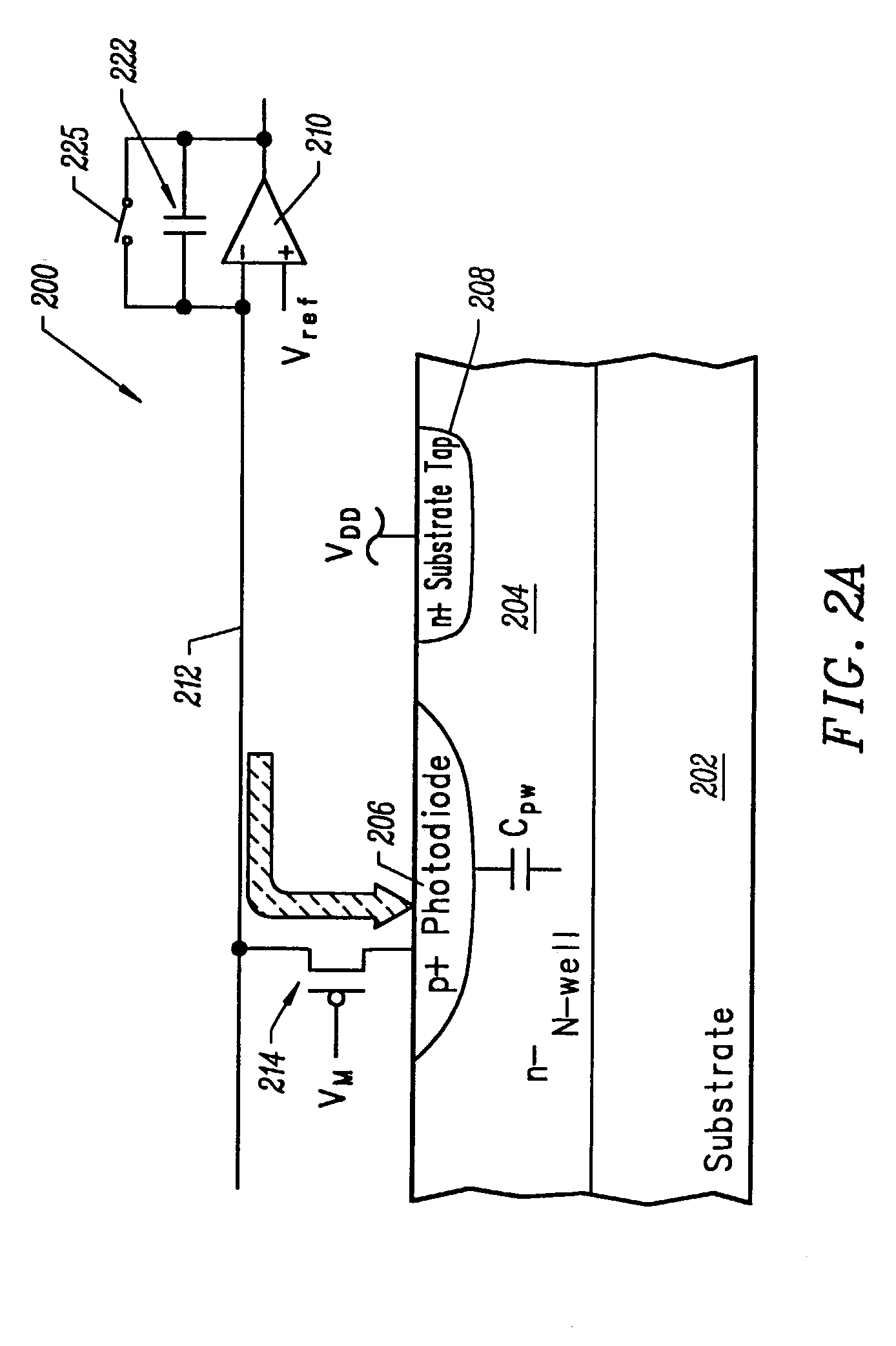Pixel correction system and method for CMOS imagers
- Summary
- Abstract
- Description
- Claims
- Application Information
AI Technical Summary
Benefits of technology
Problems solved by technology
Method used
Image
Examples
Embodiment Construction
[0032]The invention will be described with reference to certain preferred embodiments set forth below. Specifically, the invention will be described with reference to a particular CMOS sensor employing depletion mode photodiodes. It should be understood that the invention is in no way specifically limited to these embodiments. For example, the methods and systems described herein may be profitably applied to photogate arrays, CCD arrays and virtually any other type of radiation imaging array. Further, while the CMOS photodiode array design presented herein is a “passive” design, the principles of this invention can be applied to other designs such as active pixel designs.
[0033]FIG. 1 presents one preferred system architecture for implementing a CMOS imager in accordance with this invention. Preferably, all elements of the depicted system are implemented on a single integrated circuit chip. The figure presents an imager 10 including four primary elements: a pixel array area sensor 12...
PUM
 Login to View More
Login to View More Abstract
Description
Claims
Application Information
 Login to View More
Login to View More - R&D
- Intellectual Property
- Life Sciences
- Materials
- Tech Scout
- Unparalleled Data Quality
- Higher Quality Content
- 60% Fewer Hallucinations
Browse by: Latest US Patents, China's latest patents, Technical Efficacy Thesaurus, Application Domain, Technology Topic, Popular Technical Reports.
© 2025 PatSnap. All rights reserved.Legal|Privacy policy|Modern Slavery Act Transparency Statement|Sitemap|About US| Contact US: help@patsnap.com



